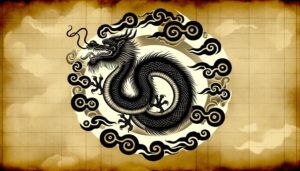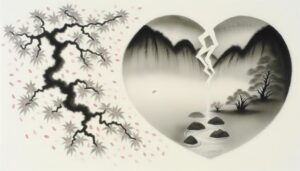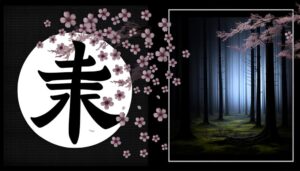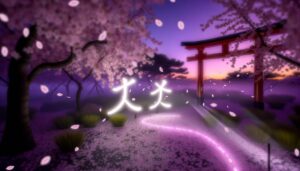What Is the Traditional Japanese Symbol for Family?
The traditional Japanese symbol for family, represented by the kanji '家' (ie), originates from ancient Chinese script and was later integrated into Japanese culture. This character embodies lineage, heritage, and the extended family, signifying the importance of ancestors and future generations.
It reflects a hierarchical structure characterized by filial piety and shared responsibilities. Additionally, family crests (kamon) started in the Heian period, reflecting aristocratic lineage through motifs from nature and mythology.
Shrine inscriptions also play a significant role in honoring family heritage. Understanding '家' reveals profound insights into Japanese social and cultural values.
Explore more to uncover its deep historical significance.
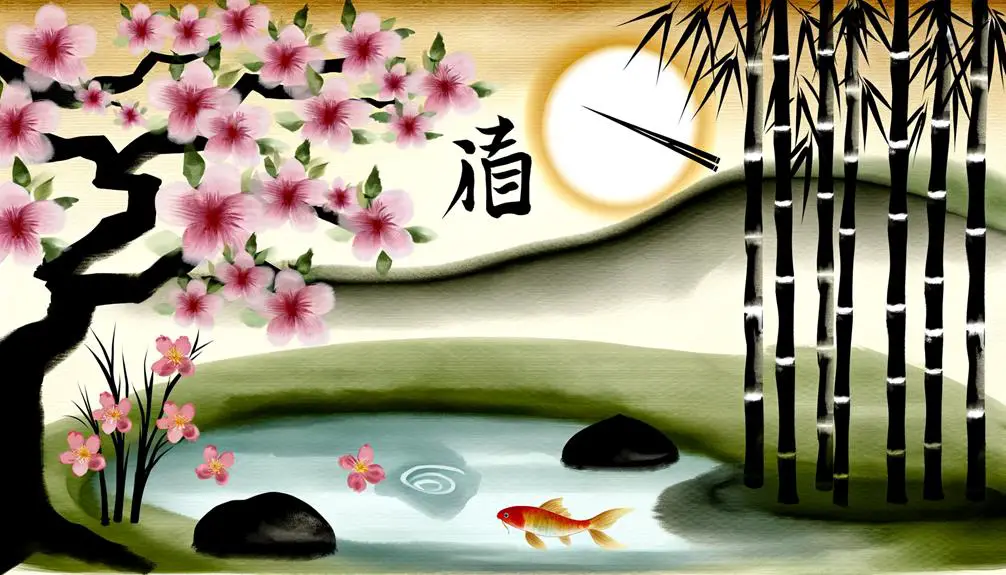
Key Takeaways
- The traditional Japanese symbol for family is the kanji '家', pronounced 'ie'.
- '家' symbolizes lineage, heritage, and familial bonds in Japanese culture.
- The kanji emphasizes the importance of family ties and ancestral respect.
- Family crests ('kamon') historically identified aristocratic lineages and are still culturally significant.
- Shrine inscriptions often use '家' to honor ancestors and reflect family heritage.
Historical Origins
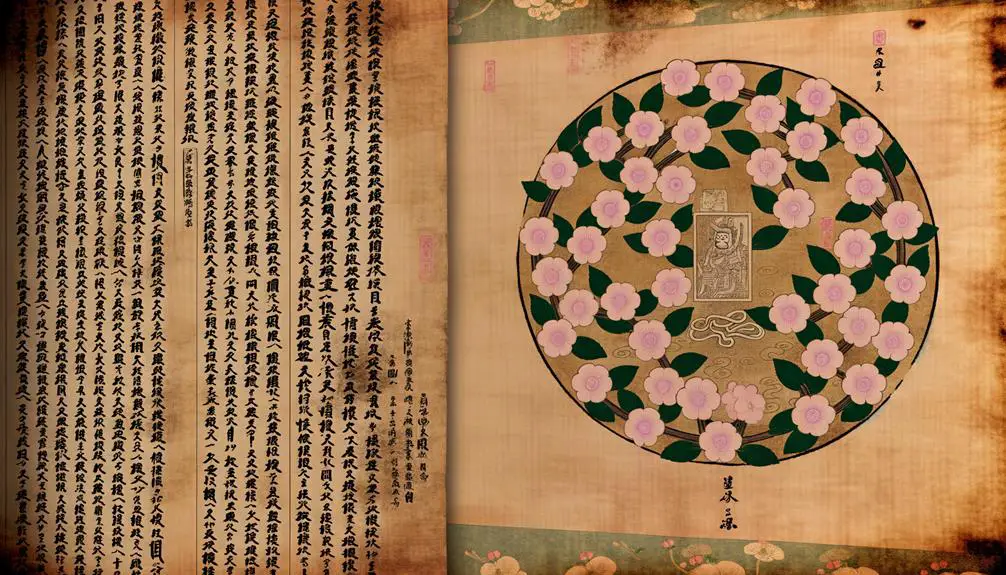
The historical origins of the Japanese symbol for family, or '家' (ie), can be traced back to ancient Chinese script, which profoundly influenced the development of written language in Japan.
The character '家' first appeared in Chinese oracle bone script during the Shang Dynasty (circa 1600-1046 BCE), where it depicted a dwelling with a roof and an enclosure.
As Chinese culture and writing spread to Japan through diplomatic and cultural exchanges in the 5th and 6th centuries, the character was adopted and adapted into the Japanese writing system, known as Kanji.
This transference was facilitated by the introduction of Buddhism and other Chinese cultural elements, which necessitated a written form to document religious, governmental, and societal structures in Japan.
Symbolic Meanings
In Japanese culture, the symbol '家' (ie) embodies a rich tapestry of meanings that extend beyond its literal interpretation as a house or dwelling. Historically, 'ie' signifies the extended family unit, encompassing not just immediate family members but also ancestors and future generations. It represents lineage, heritage, and the continuity of familial bonds.
This symbol is deeply embedded in the Japanese social system, reflecting the hierarchical structure and the importance of filial piety. Additionally, 'ie' encapsulates the collective identity and shared responsibilities within the household, emphasizing interdependence and mutual support.
In this particular scenario, the term transcends physical space, symbolizing a cohesive unit bound by tradition, duty, and a sense of belonging.
Family Crests
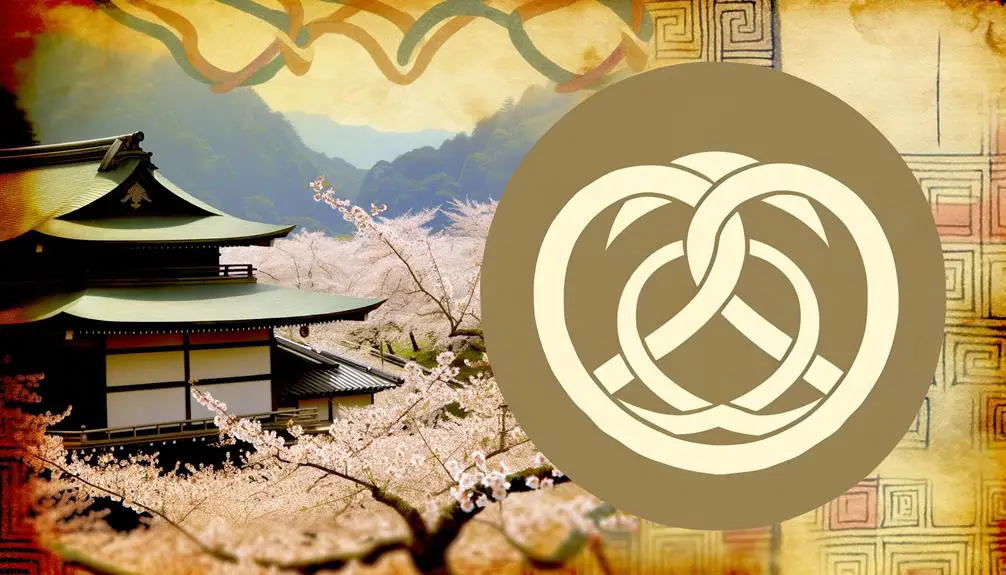
In the context of Japanese culture, family crests, or 'kamon,' hold profound historical significance, tracing back to the Heian period (794-1185) where they were used to identify aristocratic lineages.
The design elements of these emblems are meticulously crafted, often incorporating motifs from nature, mythology, and religious symbols, each carrying specific meanings that reflect the family's heritage and status.
Understanding the intricate details of these crests provides insight into the social and cultural fabric of historical Japan.
Historical Significance
Emerging during the Heian period, Japanese family crests, or 'kamon,' served as intricate symbols of lineage, status, and clan identity. They played a pivotal role in the social fabric of feudal Japan, distinguishing noble families and samurai clans.
The historical significance of kamon can be encapsulated through various aspects:
- Genealogical Record: Kamon documented family heritage, ensuring continuity across generations.
- Social Hierarchy: They signified rank and societal standing within the rigid class system.
- Military Identification: Samurai used crests on armor and banners for battlefield recognition.
- Marital Alliances: Crests symbolized unions, often merging elements from both families.
- Cultural Legacy: Kamon remain an enduring proof of Japan's intricate cultural history.
Understanding kamon offers insight into the historical dynamics of Japanese society.
Design Elements
The intricate design elements of kamon, or family crests, reflect the deep symbolism and aesthetic principles that characterized Japanese art and heraldry during the Heian period and beyond.
These crests often incorporate natural motifs such as flora, fauna, and celestial elements, each imbued with specific meanings. For instance, the chrysanthemum symbolizes longevity and rejuvenation, while the crane represents peace and fidelity.
Design precision is paramount, adhering to symmetrical patterns and minimalistic beauty, which are hallmarks of Japanese aesthetics. The use of monochrome or limited color palettes enhances their elegance and readability.
Kamon not only served as identifiers but also conveyed social status and familial heritage, making them integral to the cultural fabric of Japan.
Shrine Inscriptions
Shrine inscriptions in Japan, often meticulously carved into wooden plaques or stone tablets, offer profound insights into the cultural and historical significance of family symbols within Shinto and Buddhist practices. These inscriptions serve various purposes:
- Commemoration of ancestors: Honoring familial lineage and ancestors.
- Protection charms: Invoking blessings and safeguarding family members.
- Historical records: Documenting significant family events and contributions.
- Spiritual dedication: Expressing devotion and prayers for family well-being.
- Symbolic representation: Utilizing specific family crests (Kamon) to denote heritage.
Each of these elements reflects the deep intertwining of family and spiritual life, illustrating how shrines function as both religious and familial sanctuaries.
The inscriptions not only preserve historical narratives but also sustain the living traditions of family reverence in Japan.
Linguistic Significance
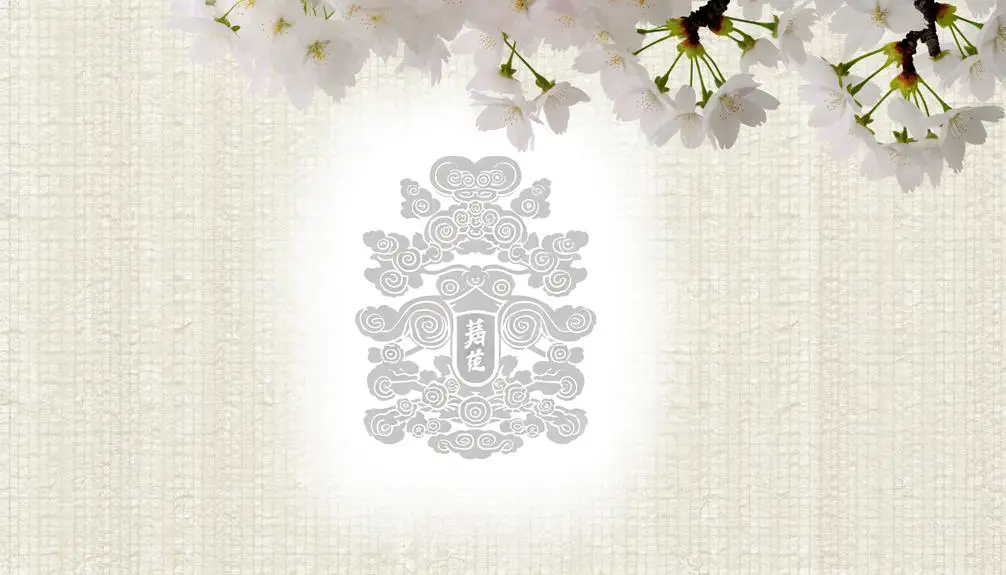
The kanji for family, 家 (ie), encapsulates a rich cultural heritage, symbolizing not only the household but also the continuity of familial lineage.
Historically, this character has been deeply embedded in Japanese social structures, reflecting the importance of family ties and ancestral respect.
Understanding its usage and evolution within cultural contexts provides insight into the societal values that have shaped Japanese identity over centuries.
Kanji for Family
In examining the kanji for family (家), one must understand its intricate composition and historical evolution to fully grasp its linguistic significance.
The character is composed of two primary elements: '宀' (roof) and '豕' (pig). This combination historically symbolizes a household, showcasing elements that were crucial in ancient agrarian societies.
- 宀 (mián): Represents a roof, denoting shelter or a home.
- 豕 (shǐ): Depicts a pig, indicating wealth and sustenance.
- Historical context: Reflects the agrarian lifestyle where livestock was important.
- Semantic meaning: Emphasizes the significance of family as a unit of economic production.
- Phonetic evolution: The character has maintained consistent pronunciation over centuries.
These components reflect the foundational importance of family in Japanese society, both linguistically and historically.
Cultural Context
Understanding the cultural context of the kanji for family (家) requires an exploration of how its linguistic significance has permeated various facets of Japanese social and familial structures. Historically, 家 (ie) has symbolized not only the nuclear family but the entire household, including extended family members and even ancestors. This kanji embodies the concept of continuity and legacy, emphasizing the importance of lineage and heritage.
In traditional Japanese society, the 家 system underscored hierarchical relationships and duties within the family unit, reflecting broader social norms. Linguistically, 家 has been integrated into compound words and idioms, further enriching its cultural resonance. The kanji captures both the tangible and intangible elements that constitute familial bonds in Japan.
Modern Usage
Modern Japanese society continues to integrate traditional symbols for family into contemporary contexts, reflecting both cultural heritage and evolving social dynamics. These symbols, such as the kanji for 'family' (家), are utilized in various modern applications, serving as a bridge between the past and present.
Fashion: Embroidered on clothing and accessories.
Interior Design: Incorporated into home decor to signify familial bonds.
Technology: Used in digital communication, such as emojis and stickers.
Corporate Branding: Adopted by companies to emphasize family-oriented values.
Education: Taught in schools to instill cultural awareness among younger generations.
This modern usage underscores the enduring relevance of traditional symbols, fostering a deeper connection to Japan's rich cultural tapestry while adapting to contemporary life.
Cultural Impact
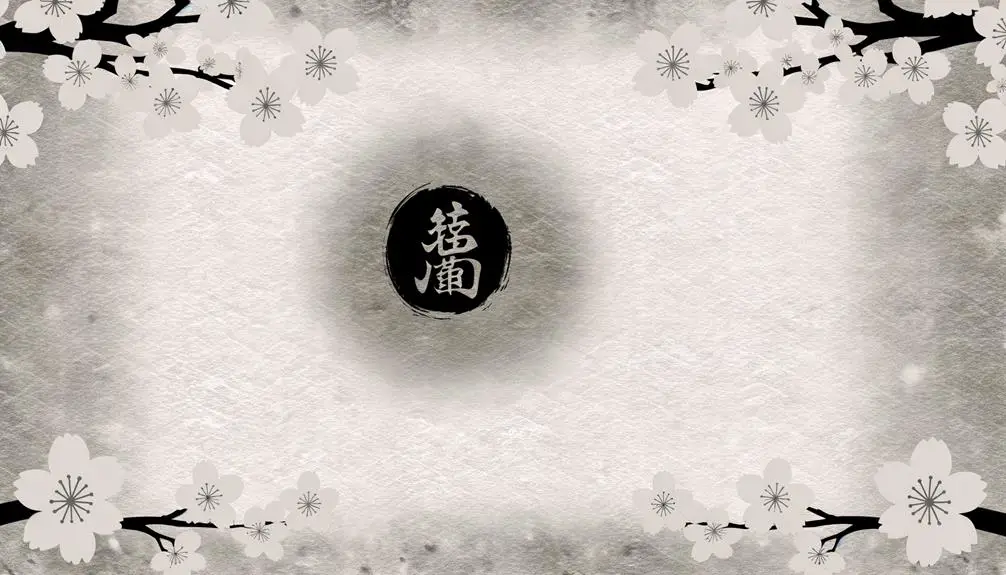
The cultural impact of traditional Japanese symbols for family, such as the kanji '家' (ie), resonates deeply within societal structures, influencing everything from personal identity to collective values.
Historically, '家' represented not just the physical house but also the lineage and continuity of family heritage. In the Edo period, it underscored familial duty and hierarchical roles, reinforcing social cohesion.
Contemporary Japan still reflects these values, where '家' symbolizes unity and shared responsibility. The concept permeates literature, art, and even corporate culture, where companies often adopt familial structures.
This enduring symbol encapsulates the Japanese ethos, bridging tradition and modernity, and continuously shaping interpersonal relationships and societal norms. Understanding '家' offers profound insights into Japanese cultural and social paradigms.
Conclusion
The traditional Japanese symbol for family holds profound historical and cultural significance, encompassing intricate meanings and diverse applications.
Significantly, family crests (kamon) have been emblematic of lineage and heritage, with over 20,000 distinct designs documented.
These symbols permeate various aspects of Japanese life, from shrine inscriptions to contemporary representations.
The enduring presence and evolution of these symbols underscore their pivotal role in shaping Japanese identity and societal values, reflecting a rich tapestry of historical continuity and cultural resonance.

